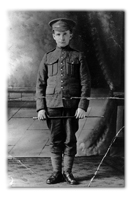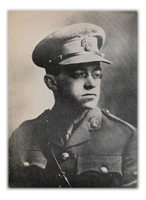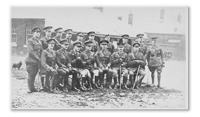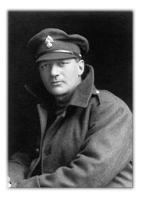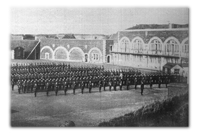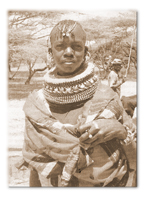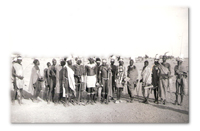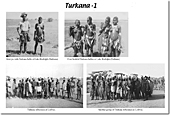 |
| Turkana |
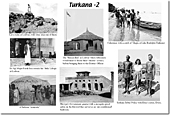 |
| Turkana |
With this in mind I was successful in securing a posting to the most uninhabitable place on earth - the parched wilderness of Turkana in North West Kenya bordering Sudan on the one side and Ethiopia on the other.
To me, despite the intolerable heat and the fierce-looking Turkana tribesmen who roamed around naked (sicut Deus creavit), I felt so pleased that I had landed in God's own country.
Coming from a 'civilised' part of the world, it was not easy to get used to seeing naked tribesmen and scantily clad women roam about the place in search of pasture for their goats which they valued greatly. Water was a luxury, and in this land of black lava boulders and endless nothingness, these simple people were to teach me a lesson in survival I've never forgotten.
Unlike us in the West who are always concerned about wanting more despite having so much, I found that the Turkana, despite the harsh and punishing environment they live in, seemed so content with their lot. For them, no thought of making money(they hardly had any) or wanting bigger houses. Their houses consisted of nothing more than a few twigs strung together to provide a hut-like structure. These were referred to as their manyattas( a name I gave to our house in England).
The Turkana are a warlike people who possess virtually nothing but seem so content. The region hardly gets any rainfall so nothing of worth grows there. They depend for survival on the blood, milk and meat from their goat herds and the exotic berries that grow in this parched land.
These observations are from the time I spent in Turkana in the late 1940's. the picture today is quite different. Not only have crops been introduced to this area through a flood irrigation scheme, but a thriving fishing business has also been set up at Lake Turkana. People who were previously referred to as 'primitive' are now taking their part as equals in the world. Names that come to mind are the Olympic champion, Paul Ereng and the Supermodel, Ajuma Nasenyana.
Oil too has been discovered in the region and my hope is that the profits from this liquid gold will go towards helping the local populace and not end up in the pockets of money- grabbing politicians in Nairobi.
If there is one thing the Turkana have taught me , it is this - to be content with what we have.
Amassing wealth will not spell happiness!
That urge to travel and learn to co-exist,
With man and nature -no matter how far,
With one thought in mind -to remember who we are!
This indeed is the path I chose,
To live amidst nature and those simple folk,
Who taught me a lot as I moved with them,
Something I could never have got from another man!
Why would I choose to live in this barren waste,
And miss out on all that City life offered?
My simple answer to this oft-asked question
Is -'there' so much more pleasure in a nomadic life!
Their simple lifestyle and friendly nature,
Drew me closer to them and their rich culture;
They seemed so content with the little they had,
A timely lesson for us all -to save us from going mad!
The land they lived in was a barren waste,
Of molten rocks and miles of nothingness
And yet they survived in this desert heat
Living on berries, milk and sometimes meat!
We in the West seem so concerned
About what the future holds for us;
But these simple folk look not to the future
But instead are content with what each day brings them.
A timely lesson for us all to learn
From these simple folk who've learnt to survive
On the little they have - and yet be grateful -never envious
Of those who have plenty yet never content..
